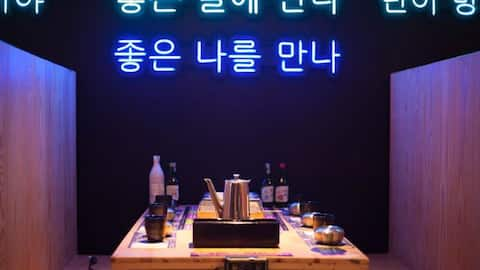A guide to Korean eating decorum
What's the story
Korean cuisine is renowned worldwide for its rich flavors, diverse dishes, and vibrant culinary traditions. However, beyond the tantalizing diversity of food, understanding and appreciating Korean dining etiquette is essential for truly immersing oneself in the culture. From the proper use of chopsticks to the significance of communal dining, here's a glimpse into the intricate world of Korean dining customs.
Seating arrangement
Hierarchical seating
In traditional Korean dining, seating arrangements are often hierarchical and reflective of social status or age. The eldest or most esteemed guest is typically seated first, facing the door or the most honored position at the table. Guests of lower status or younger age sit accordingly, with the youngest or lowest-ranking individuals seated farthest from the door.
Elders start first
Seniority matters
In Korean dining etiquette, it's customary to allow the eldest person present to start eating before anyone else. This practice underscores respect for seniority and is deeply ingrained in Korean culture. When Koreans inquire about your age early in a social interaction, it's not merely curiosity; rather, it's a way to understand your position within the group and ensure that proper etiquette is observed.
Match everyone's speed
Strike a balance
In Korean dining etiquette, it is important to try to match the pace of those around you. Eating too quickly can give the impression that you're rushing through the meal or are disinterested, while eating too slowly might convey that you're not enjoying the food. Striking a balance in your eating pace demonstrates respect for the dining experience and the company you're with.
Sharing is caring
Sharing is the norm
In Korean dining customs, it is common to order multiple dishes for the table, each person selecting their preferences. Despite this individual ordering, sharing food is the norm. It's typical for Koreans to offer and accept tastes of each other's dishes without hesitation. So, don't hesitate to offer a taste of your meal, and graciously accept if someone offers you a sample of theirs.
What to say
Appreciate your meal
Before beginning your meal, it is customary in Korean culture to express anticipation and gratitude by saying, "I will eat well" or "Jalmukesumneda." This shows appreciation for the food that is about to be enjoyed. Expressing "I will enjoy this meal" is a polite way to show appreciation for the food received and the effort put into preparing it.
Chopstick
Avoid poking
In Korean dining etiquette, chopsticks are used for picking up dishes, while a spoon is typically reserved for rice and soup. It is important not to hold both chopsticks and a spoon simultaneously, and never use chopsticks as skewers or stab them into a bowl of rice, as it resembles a funeral ritual. Also, keep your rice bowl on the table throughout the meal.
